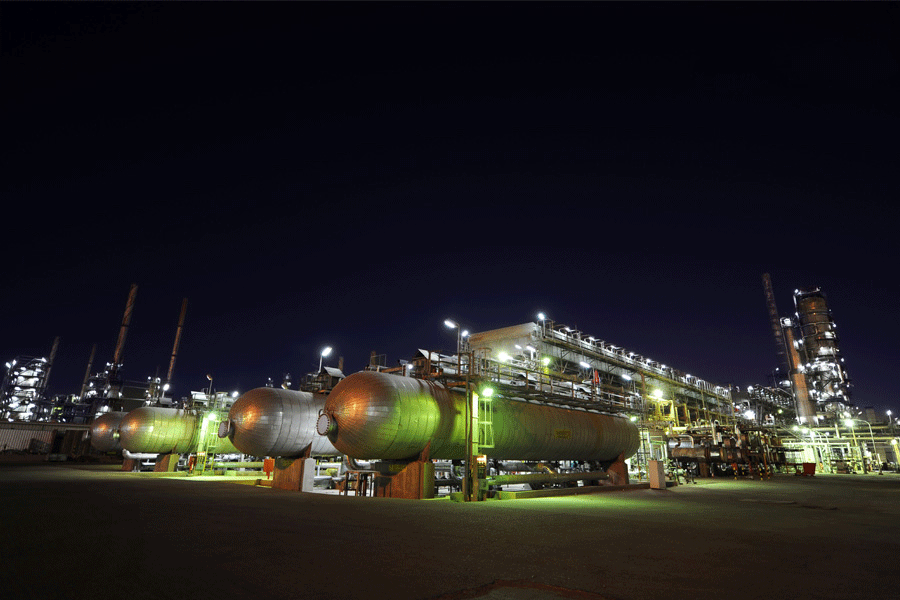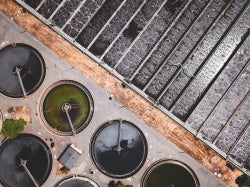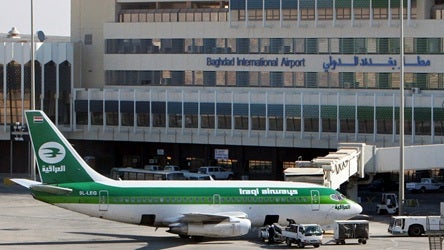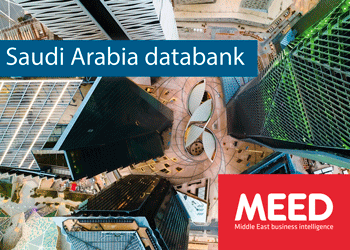Who will fund Syria’s $1tn rebuild?
11 June 2025

Following the end of its brutal civil war in December, Syria now faces an enormous task to rebuild its economy and society. More than half of Syrians are thought to have been displaced, either moving within the country or fleeing abroad; 90% of those still there live in poverty, according to the UN.
The World Bank has estimated that Syria’s GDP shrank by more than half from 2010 to 2020 and it has continued falling since. Just how far it might have dropped is hard to know, given the lack of reliable data. IMF spokesperson Julie Kozack said on 22 May the Syrian authorities need to rebuild basic economic institutions “including the ability to produce economic statistics”.
The cost of turning the economy around is another imponderable. One widely touted estimate is it will take $400bn to rebuild or replace everything broken, but Economy and Industry Minister Mohammad Nidal Al-Shaar has put the figure far higher. He told the Arab Media Summit in Dubai in May: “We need at least $1tn to reconstruct and rebuild a new Syria.”
For now, the sums coming in are relatively modest, given what is needed. In March, international donors pledged $6.5bn in aid, some of which will be handed out over several years.
“We don't know if the money's going to pour in, but, if it is going to, it isn't pouring in yet,” says Christopher Phillips, professor of international relations at Queen Mary University of London.
Commercial deals are being signed, however. The Ministry of Economy and Industry issued 345 industrial licences in the first quarter of 2025, in sectors such as food processing, chemicals and textiles, creating an estimated 4,242 jobs.
Larger projects are meanwhile generally still in the form of memoranda of understanding (MoUs), rather than definite contracts. In mid-May, for example, Dubai’s DP World signed an $800m MoU to develop and operate a terminal at Tartous Port. Later that month, a consortium led by Qatar’s UCC Holding signed a $7bn MoU to develop five power plants.
Such agreements have been made possible by the removal of many, though not all, international sanctions. On 23 May, the US lifted most of its trade restrictions on Syria. Ten days earlier, President Donald Trump had pledged to remove the sanctions, following lobbying by Saudi Arabia and Turkey.
European Union, UK and Japanese sanctions are also being eased.
On a trip to Damascus in late May, Saudi Foreign Minister Prince Faisal Bin Farhan said the easing of sanctions would help in “reactivating the Syrian economy”.
Commerce resumes
Trade is slowly building up. Phosphates are being shipped from Tartous Port to Romania and more traffic has been passing through the Nassib border crossing with Jordan – in early June, Amman lifted import bans on some Syrian goods.
There have been other positive signs too. The Damascus Securities Exchange reopened on 2 June, after a six-month pause, and the country is expected to rejoin the Swift international banking network soon.
Passenger traffic is building up at Damascus International airport, which now has direct links to Turkey, Jordan, the UAE and Qatar. In May, Flydubai became the first UAE carrier to land at Damascus in almost 12 years; Emirates is due to follow by mid-July. Turkish Airlines subsidiary AJet will start flying to the Syrian capital in mid-June.
However, serious domestic problems remain. In late April, there were armed clashes between Druze factions and government forces in southern Damascus. In early May, government security forces clashed with pro-Assad fighters in the northwest. More than 1,000 people were killed in these incidents.
President Ahmed Al-Sharaa included a wide range of voices in the cabinet he announced on 29 March, with representatives from the Alawite, Christian, Druze and other minority groups. However, the most important roles went to his former colleagues in Hayat Tahrir al-Sham (HTS) and it is clear he favours a strong, central government with little autonomy given to different groups or regions. Given the government does not control the whole country, that may be a difficult stance to maintain.
There have also been cross-border issues with Israel, which is occupying a swathe of territory in southern Syria beyond the 1974 ceasefire line and has conducted hundreds of airstrikes on Syria since December. Among the more recent incidents, on 30 May Israel struck what it claimed were missile storage facilities in the coastal cities of Latakia and Tartous. Israeli officials also claimed on 3 June that two projectiles had been launched from Syria towards its territory.
Riyadh has positioned itself as a guarantor and has led the way in re-engaging with Damascus
Nanar Hawach, International Crisis Group
Restoring regional relations
Wider international relations hold the key to the Syrian economy’s prospects. In particular, Gulf countries are a potential source of investment that Al-Sharaa is keen to exploit. Qatar and Saudi Arabia have been making the running, while the UAE has been more cautious, not least because of its opposition to Islamist groups gaining political power.
Al-Sharaa’s pragmatic political approach has brought some useful gains already. The World Bank is planning to restart operations in Syria, after the country’s debts to its International Development Association arm were paid by Saudi Arabia and Qatar. Those two countries are also helping to pay Syrian public sector salaries.
Saudi Arabia may prove to be the most important Gulf partner going forward, according to some analysts.
“Saudi Arabia remains the key player shaping the regional response to Syria. Riyadh has positioned itself as a guarantor and has led the way in re-engaging with Damascus,” says Nanar Hawach, a senior analyst covering Syria at the International Crisis Group. “Saudi Arabia sets the tone for how the region deals with Syria.”
But Syrian officials have also been keen to engage potential investors from further afield, including Turkey, the EU, the US and China.
“How Al-Sharaa has behaved so far has actually been quite cautious internationally,” says Phillips. “Not trying to align with any one camp or the other, not shutting off avenues. What we're seeing from Syria, is a quite pragmatic approach to foreign affairs.”
Syrians will be hoping that approach pays off economically before too long.
Exclusive from Meed
-
 Kuwait approves major petchems project
Kuwait approves major petchems project3 October 2025
-
 SWPC names preferred bidder for Jizan sewage project
SWPC names preferred bidder for Jizan sewage project3 October 2025
-
 Three teams bid for Baghdad airport PPP
Three teams bid for Baghdad airport PPP3 October 2025
-
 Qatari-led team signs Syria airport consultancy agreements
Qatari-led team signs Syria airport consultancy agreements3 October 2025
-
 Saudi Arabia maintains growth momentum
Saudi Arabia maintains growth momentum3 October 2025
All of this is only 1% of what MEED.com has to offer
Subscribe now and unlock all the 153,671 articles on MEED.com
- All the latest news, data, and market intelligence across MENA at your fingerprints
- First-hand updates and inside information on projects, clients and competitors that matter to you
- 20 years' archive of information, data, and news for you to access at your convenience
- Strategize to succeed and minimise risks with timely analysis of current and future market trends

Related Articles
-
 Kuwait approves major petchems project
Kuwait approves major petchems project3 October 2025

State-owned Kuwait Petroleum Corporation (KPC) has given its subsidiary Petrochemical Industries Company (PIC) preliminary approval to proceed with negotiations with a potential partner for its planned olefins plant in the country.
The project, known as Olefins IV, is estimated to be worth $500m, according to MEED Projects.
The latest approval from KPC for the project comes after the availability of the necessary feedstock for the project was confirmed, according to KPC’s most recent annual report.
In July, MEED reported that feasibility studies for the project had been completed, but PIC was waiting for confirmation of the volumes of gas that would be available for the project as feedstock.
The Olefins IV project is expected to use natural gas produced by upstream operator Kuwait Oil Company (KOC), another KPC subsidiary.
There is currently uncertainty at PIC about when the front-end engineering and design work for the project will commence, according to industry sources.
As part of PIC’s long-term strategy, which looks ahead to 2040, it is aiming to scale up its portfolio and leverage partnerships to add value.
The company has stated that it aims to expand its core portfolio both within and outside Kuwait through greenfield and brownfield projects, with the goal of achieving a leading global position.
It has also said that it wants to expand into downstream derivatives linked to its base petrochemicals portfolio.
Chinese chemicals
Earlier this year, Wanhua Chemical Group Company signed an equity subscription agreement in which PIC subscribed to a 25% equity stake in selected petrochemical assets of Wanhua Chemical in Yantai, China.
Olefins are a class of petrochemicals made up of hydrogen and carbon, with one or more pairs of carbon atoms linked by a double bond. Two of the most important are ethylene and propylene.
Olefins are widely used as raw materials in the manufacture of chemicals and polymer products, such as plastics, detergents, adhesives, rubber and food packaging.
 READ THE OCTOBER 2025 MEED BUSINESS REVIEW – click here to view PDF
READ THE OCTOBER 2025 MEED BUSINESS REVIEW – click here to view PDFPrivate sector takes on expanded role; Riyadh shifts towards strategic expenditure; MEED’s 2025 power developer ranking
Distributed to senior decision-makers in the region and around the world, the October 2025 edition of MEED Business Review includes:
> AGENDA 1: A new dawn for PPPs> AGENDA 2: GCC pushes PPPs to deliver $70bn pipeline> POWER DEVELOPER RANKING: Acwa Power consolidates power sector dominance> IPPs: GCC enters pivotal year for IPPs> ACQUISITION: Wood takeover could boost Sidara profits> INTERVIEW: SLB strives to boost regional standing> SAUDI MARKET FOCUS: Riyadh strives for sustainable growthTo see previous issues of MEED Business Review, please click herehttps://image.digitalinsightresearch.in/uploads/NewsArticle/14789678/main3336.gif -
 SWPC names preferred bidder for Jizan sewage project
SWPC names preferred bidder for Jizan sewage project3 October 2025
Saudi Water Partnership Company (SWPC) has announced its preferred bidder for the Jizan Cluster Small Sewage Treatment Plants (SSTP) and Collection Network (CN) project.
AlKhorayef Water & Power Technologies, part of Saudi Arabia-based AlKhoraef Group, is the favourite to win the contract to develop the project under a 25-year contract.
The $150m scheme involves the construction of 12 sewage treatment plants across the Jizan region in the southwestern part of the kingdom. The plants will have a combined treatment capacity of 74,700 cubic metres a day (cm/d), with individual plant capacities ranging between 1,800 and 15,000 cm/d.
The scheme also involves laying 166 kilometres of collection pipelines, tanker discharge points and effluent connections.
According to SWPC, it is the first project of its kind integrating sewage treatment plants with collection networks under private sector participation.
Earlier this year, Alkhorayef Water & Power Technologies Company won the contract to operate and maintain four water treatment plants in Saudi Arabia.
The water treatment plants are located in Wadi Aldawaser, Alsalil, Alsafa in Najran and Alwajid.
 READ THE OCTOBER 2025 MEED BUSINESS REVIEW – click here to view PDF
READ THE OCTOBER 2025 MEED BUSINESS REVIEW – click here to view PDFPrivate sector takes on expanded role; Riyadh shifts towards strategic expenditure; MEED’s 2025 power developer ranking
Distributed to senior decision-makers in the region and around the world, the October 2025 edition of MEED Business Review includes:
> AGENDA 1: A new dawn for PPPs> AGENDA 2: GCC pushes PPPs to deliver $70bn pipeline> POWER DEVELOPER RANKING: Acwa Power consolidates power sector dominance> IPPs: GCC enters pivotal year for IPPs> ACQUISITION: Wood takeover could boost Sidara profits> INTERVIEW: SLB strives to boost regional standing> SAUDI MARKET FOCUS: Riyadh strives for sustainable growthTo see previous issues of MEED Business Review, please click herehttps://image.digitalinsightresearch.in/uploads/NewsArticle/14792764/main.jpg -
 Three teams bid for Baghdad airport PPP
Three teams bid for Baghdad airport PPP3 October 2025

Three consortiums have submitted bids for a contract to develop Baghdad International airport on a public-private partnership (PPP) basis.
The scope of the estimated $400m-$600m project involves rehabilitating, expanding, financing, operating and maintaining the airport. It is the first airport PPP project to be launched in Iraq.
Iraq’s Ministry of Transport and General Company for Airport & Air Navigation Services released the tender in July this year.
According to sources, the bidding consortium are:
- Asyad Holding / Top International Engineering Corporation / Lamar Holding / YDA Insaat / Dublin Airport Authority (Saudi Arabia/Saudi Arabia/Saudi Arabia/Turkiye/Ireland)
- Corporacion America Airports / Amwaj International (Luxembourg/Iraq)
- ERG International / Terminal Yapi / ERG Insaat (UK/Turkiye/Turkiye)
According to a statement posted on its website, the Ministry of Transport says the initial capacity of the airport is expected to be around 9 million passengers, which will be gradually increased to 15 million passengers.
The International Finance Corporation (IFC), a member of the World Bank Group, is the project’s lead transaction adviser.
In August, MEED reported that Iraqi Prime Minister Mohammed Al-Sudani had met with companies bidding for the contract to develop Baghdad International airport.
The meeting took place in Baghdad and was also attended by officials from IFC.
 READ THE OCTOBER 2025 MEED BUSINESS REVIEW – click here to view PDF
READ THE OCTOBER 2025 MEED BUSINESS REVIEW – click here to view PDFPrivate sector takes on expanded role; Riyadh shifts towards strategic expenditure; MEED’s 2025 power developer ranking
Distributed to senior decision-makers in the region and around the world, the October 2025 edition of MEED Business Review includes:
> AGENDA 1: A new dawn for PPPs> AGENDA 2: GCC pushes PPPs to deliver $70bn pipeline> POWER DEVELOPER RANKING: Acwa Power consolidates power sector dominance> IPPs: GCC enters pivotal year for IPPs> ACQUISITION: Wood takeover could boost Sidara profits> INTERVIEW: SLB strives to boost regional standing> SAUDI MARKET FOCUS: Riyadh strives for sustainable growthTo see previous issues of MEED Business Review, please click herehttps://image.digitalinsightresearch.in/uploads/NewsArticle/14792768/main.jpg -
 Qatari-led team signs Syria airport consultancy agreements
Qatari-led team signs Syria airport consultancy agreements3 October 2025
Register for MEED’s 14-day trial access
A consortium led by Qatar’s UCC Holding has signed five consultancy and design agreements for the redevelopment of Damascus International airport in Syria.
UCC Holding said in a statement that the agreements were signed with the following companies:
> Hesco Hammada Engineering Services: Responsible for the design and redevelopment of Terminals 1 and 2, the design of the new Terminal 3 and all associated facilities.
> H’Collective: Responsible for the architectural and interior design of the new Damascus Airport hotel.
> Dar Al-Handasah: Will serve as the Project Management Office (PMO), responsible for site supervision, design review and approval, oversight of design development, schedule verification, interim payments, and ensuring quality, safety and timely delivery. The scope also covers the study to upgrade the Damascus Airport road.
> DG Jones & Partners: Responsible for contract management, cost control and quantity surveying for the project.
> Joint venture of Elegancia Catering and Newrest Gulf: Will oversee the design and operation of the airport’s central kitchen and in-flight catering facilities.
In August, Syria’s General Authority of Civil Aviation signed a $4bn memorandum of understanding (MoU) to develop and expand Damascus International airport with a consortium of international firms led by Qatar’s UCC Holding.
The agreement designates UCC Holding as the primary developer – through its investment arm, UCC Concessions Investment – alongside three Turkish partners: Cengiz, Kalyon and TAV, and US-based Assets Investments USA.
The project will be implemented under a build-operate-transfer (BOT) model and includes the expansion of Damascus International airport in five phases.
The expansion will ultimately increase the airport’s capacity to handle 31 million passengers annually.
The agreement also includes the construction of a 50-kilometre access road to the airport and $250m in financing to purchase up to 10 Airbus A320 aircraft for Syrian Airlines.
 READ THE OCTOBER 2025 MEED BUSINESS REVIEW – click here to view PDF
READ THE OCTOBER 2025 MEED BUSINESS REVIEW – click here to view PDFPrivate sector takes on expanded role; Riyadh shifts towards strategic expenditure; MEED’s 2025 power developer ranking
Distributed to senior decision-makers in the region and around the world, the October 2025 edition of MEED Business Review includes:
> AGENDA 1: A new dawn for PPPs> AGENDA 2: GCC pushes PPPs to deliver $70bn pipeline> POWER DEVELOPER RANKING: Acwa Power consolidates power sector dominance> IPPs: GCC enters pivotal year for IPPs> ACQUISITION: Wood takeover could boost Sidara profits> INTERVIEW: SLB strives to boost regional standing> SAUDI MARKET FOCUS: Riyadh strives for sustainable growthTo see previous issues of MEED Business Review, please click herehttps://image.digitalinsightresearch.in/uploads/NewsArticle/14792862/main.jpg -
 Saudi Arabia maintains growth momentum
Saudi Arabia maintains growth momentum3 October 2025

MEED’s October 2025 special report on Saudi Arabia includes:
> COMMENT: Riyadh strives for sustainable growth
> GOVERNMENT: Riyadh confronts rising regional chaos
> ECONOMY: Riyadh looks to adjust investment approach
> BANKING: New funding sources solve Saudi liquidity challenge
> OIL & GAS: Aramco turns attention to strategic projects
> GAS: Saudi Arabia and Kuwait accelerate Dorra gas field development
> POWER: Saudi Arabia accelerates power transformation
> WATER: Transmission projects drive Saudi water sector growth
> CONSTRUCTION: Saudi construction pivots from gigaprojects to events
> TRANSPORT: Infrastructure takes centre stage in Saudi strategy
> DATABANK: Saudi Arabia maintains growth momentumTo see previous issues of MEED Business Review, please click herehttps://image.digitalinsightresearch.in/uploads/NewsArticle/14792997/main.gif

